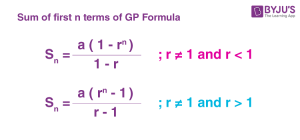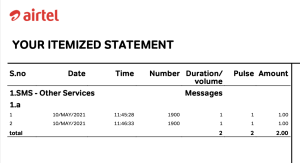To understand the GP (Geometric Progression) formula and how to sum its terms, let’s delve into the basics.
Geometric Progression (GP) is a sequence of numbers where each term after the first is found by multiplying the previous term by a fixed, non-zero number called the common ratio. The general form of a geometric sequence can be represented as:
a, ar, ar², ar³, …, ar^(n-1)
where:
– a = the first term of the sequence
– r = the common ratio
– n = the number of terms
Formula for the Sum of a Geometric Progression
The sum of the first n terms (S_n) of a geometric progression can be calculated using the formula:
For r ≠ 1:
[ S_n = a frac{(1 – r^n)}{(1 – r)} ]
For r = 1:
[ S_n = n cdot a ]
Explanation of the Formula
- First Term (a): This is the starting value of your GP.
- Common Ratio (r): This is the factor by which we multiply to get from one term to the next.
- Number of Terms (n): This indicates how many terms you want to sum up.
Example Calculation
Let’s consider an example where:
– a = 2 (first term)
– r = 3 (common ratio)
– n = 4 (number of terms)
The terms of the GP would be:
– 2, 6, 18, 54
Using the sum formula for GP:
[ S_n = 2 frac{(1 – 3^4)}{(1 – 3)} ]
[ S_n = 2 frac{(1 – 81)}{(-2)} ]
[ S_n = 2 cdot frac{-80}{-2} ]
[ S_n = 2 cdot 40 = 80 ]
So, the sum of the first 4 terms is 80.
FAQs
What is the common ratio in a GP?
The common ratio (r) in a GP is the factor by which each term is multiplied to obtain the next term. For example, in the sequence 2, 6, 18, 54, the common ratio is 3.
Can a GP have a negative common ratio?
Yes, a GP can have a negative common ratio. However, this will lead to alternating positive and negative terms in the sequence.
What happens if the common ratio is 1?
If the common ratio is 1, all terms in the GP are the same, equal to the first term. The sum of the first n terms in this case is simply n multiplied by the first term.
How do I determine if a sequence is a GP?
To determine if a sequence is a GP, check if the ratio of consecutive terms is constant. If ( frac{a_2}{a_1} = frac{a_3}{a_2} = ldots ), then the sequence is a geometric progression.
How is GP different from AP (Arithmetic Progression)?
In a GP, each term is multiplied by a constant factor (common ratio) to get the next term, while in an AP, a constant is added to each term (common difference).
Understanding geometric progressions is crucial in various fields, including finance, biology, and computer science, as they often model exponential growth or decay processes. Whether you’re calculating interest rates or predicting population growth, mastering the GP formula and its summation can be incredibly useful.












